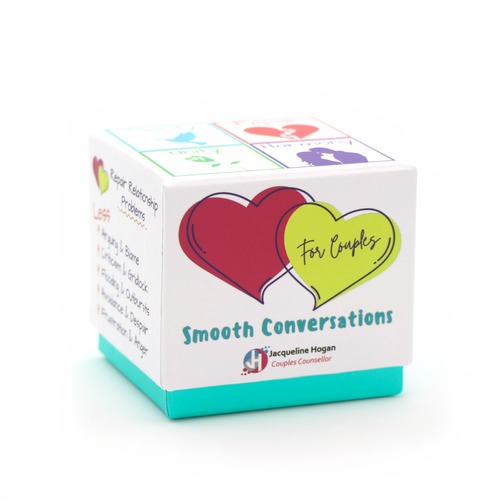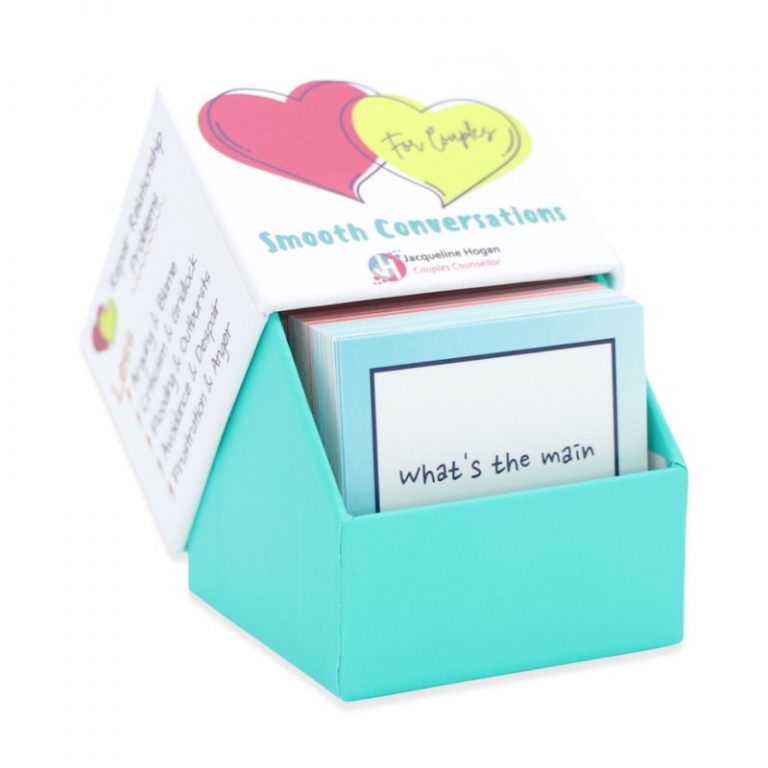Couples Communication Made Easy
Ask ‘Smooth Conversation’ questions to have calm conversations with your partner and repair relationship problems.
View the ‘Quick Start Guide’ below, or click here for the new Smooth Conversations Guidebook and take your conversations to the next level!
Quick Start Guide

Four Colours to Guide You
Learn about the four different card categories, easily identified by their colour, and get essential tips for Smooth Conversations…
As you get the hang of ‘Smooth Conversations’, you’ll discover deeper benefits and just how useful they are at reducing conflict, and having more meaningful conversations that bring you closer together.
Blue Cards - Clarity
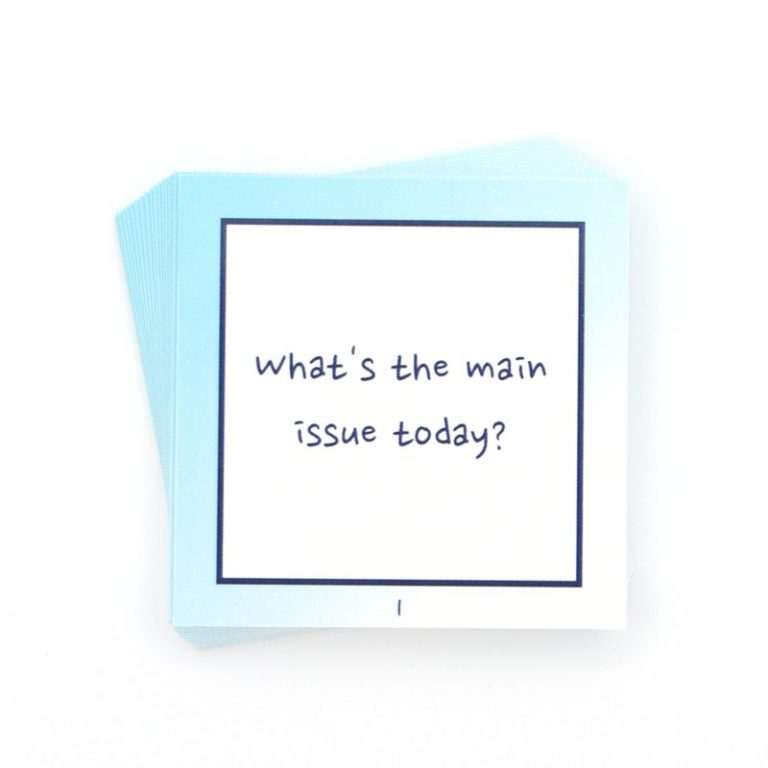
Start with the blue ‘clarity’ cards. These cards are all about gaining clarity and shared understanding. Browse the questions and learn more about a topic or area of concern in your relationship. Take in turns and give each other time and space to think, listen, respond and explore.
Red Cards - Repair
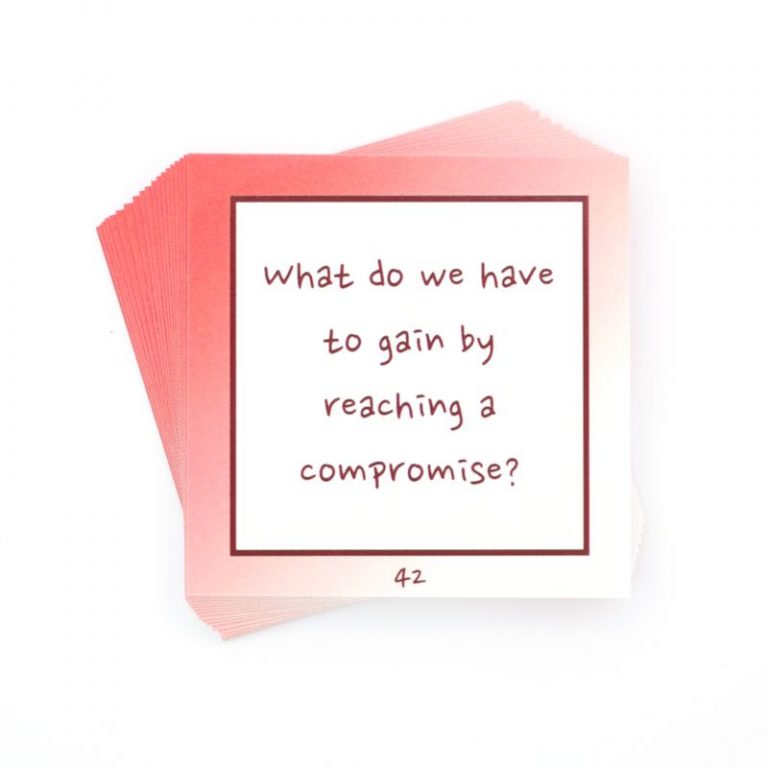
Shift to the red ‘repair’ cards to focus on pathways toward solutions, forgiveness and repair. Explore boundaries, feelings, ideas, deeper understanding, and more.
Green Cards - Unity
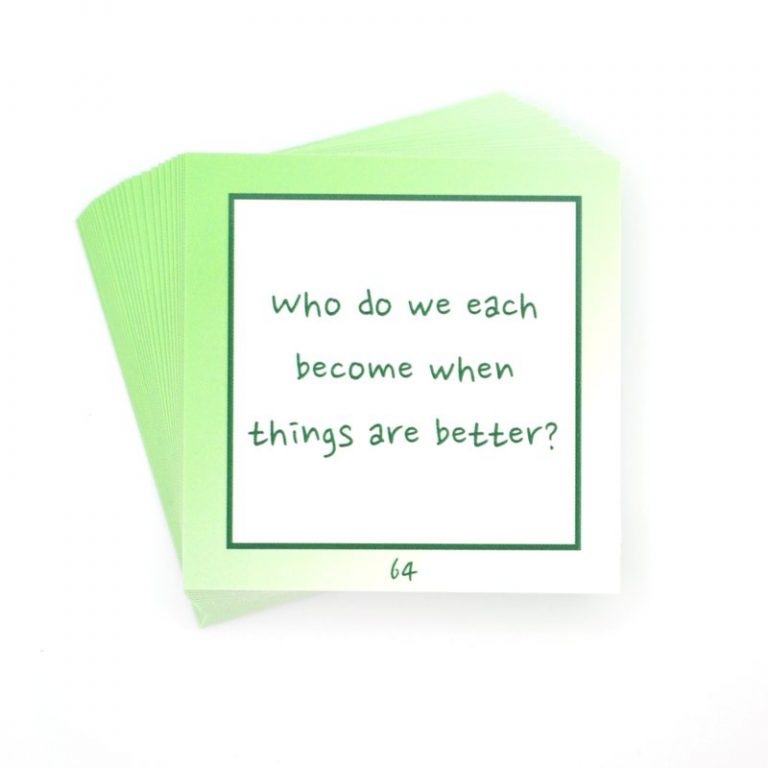
Move to the green ‘unity’ cards to come together as one, support each other and get creative. Build trust and get unstuck. Embrace possibilities, experience breakthroughs and feel confident as you make real progress as a couple.
Purple Cards - Harmony
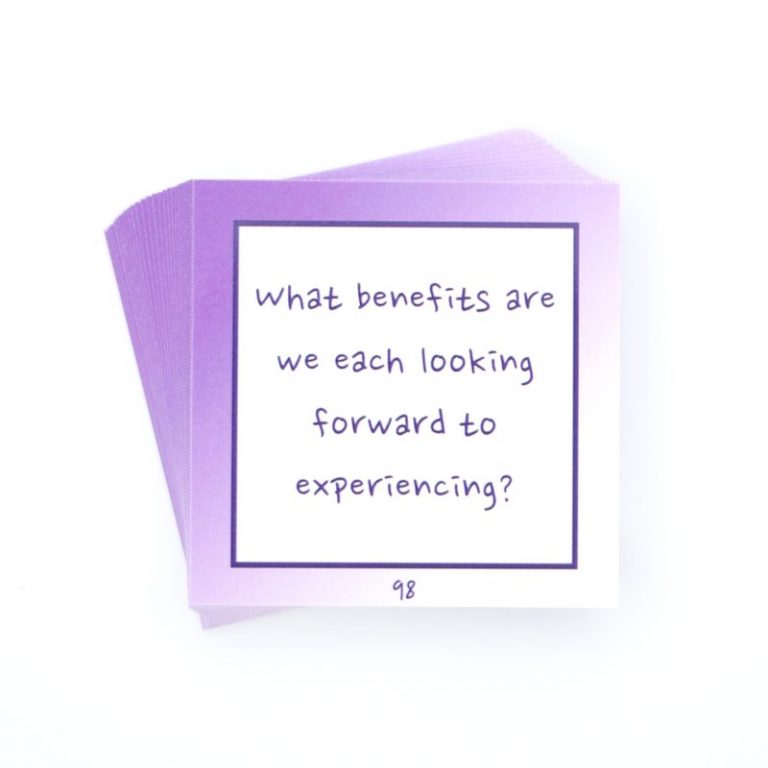
Finish with the purple ‘harmony’ cards to wrap up your conversation on a warm note. Make agreements and share a vision for the future. Harmony cards are useful for taking the next steps and building commitment in the relationship.
Essential Tips & Tricks to Get Started
The #1 purpose of ‘Smooth Conversations’ is to help you have better conversations and develop a closer, loving relationship.
Follow the top 10 tips below to ensure you have a great experience from your first conversation.
Have conversations when you are both feeling calm, and have the emotional capacity to have a great discussion. If your feeling tired, stressed or all worked up and feeling on edge. It’s wise to focus on self-soothing and relaxation first.
The cards are for inspiring peaceful and insightful discussion. They are for mutual benefit and finding acceptable outcomes to relationship problems. They are not an interrogation tool and will not help you win an argument. Using the cards with the best intentions helps build close relationships based on trust and understanding.
Depending on the nature of your conversation, be sure you both have enough time to talk. 15 minutes is an ideal minimum, while an hour is a good amount of time for deeper and more complex topics.
Being open, honest, and a little bit vulnerable will help you get to the good stuff sooner! Lowering your defenses in a respectful conversation will shed light on how you really feel, what you really think, and what you’re willing to do. If you’re defensive, closed off, dismissive or avoidant, progress will be slow and outcomes will underwhelming.
Start the conversation softly. Use a calm, natural tone to start the conversation peacefully. This helps you both feel comfortable and settle into a nice rhythm of listening, responding and asking questions.
Avoid making assumptions. Be inquisitive and let your heart and gut guide you along with the cards questions. Avoid negative sentiment clouding your conversation. Try to start with a neutral & fair bias.
Find the best questions to ask at the right time. Skip cards that aren’t relevant to your current conversation. Set aside ‘great question cards’ to ask later when the time is right. It’s okay to ask the same question more than once.
Follow conversation threads and let great conversations unfold naturally. If this means one person is asking questions and one person is listening, that’s fine. Go with the flow if you’re making great progress.
Take a moment to find the right question. It’s worth it.
Take your time to respond as best you can.
Give your partner time to respond.
Appreciate your partners participation. Be grateful to each other for sharing, compromising, caring and improving your communication and relationship. Be forgiving and allow for mistakes, ‘take-backs’ and rephrasing, we are only human after all.
Related: Smooth Conversations Workshop Video Series
Types of Conversations to Have
No two conversations are the same. In fact there are many ways a conversation can unfold. There are countless topics to talk about and all sorts of different ways a conversation can end. It’s what makes conversations so fascinating and interesting!
But what about when conversations are hard to have, end in disaster, and there are problems in the relationship?
That’s exactly what Smooth Conversations are designed for. It’s this special focus that makes them so useful!
As a starting point, here is a list of the types of conversations you can have, using Smooth Conversations to guide you.
- Get clarity and shared understanding on a topic, event or situation.
- Get clarity and shared understanding of each others feelings and experience.
- Reach an agreement / compromise on a current problem or issue.
- Explore new ideas in a collaborative and calm way.
- Process a past event. Explore forgiveness and rebuilding trust / connection.
- Explore solutions, workarounds and temporary agreements to relationship problems.
- Process emotions, difficult feelings, and complex situations.
- Explore acceptance, beliefs and values.
- Exploring change, alternate perspectives and meanings
- Creative thinking and bold ideas / solutions.
A great idea is to just start a simple conversation with your partner, use your best judgement, and with a bit of trial and error I’m sure you’ll get the hang of it in no time.
From Clarity to Harmony: The Conversation Arc
Flow from clarity to harmony through the Conversation Arc.
Enjoy the benefits of a structured conversation with enough flexibility to explore, learn, and share as you desire.
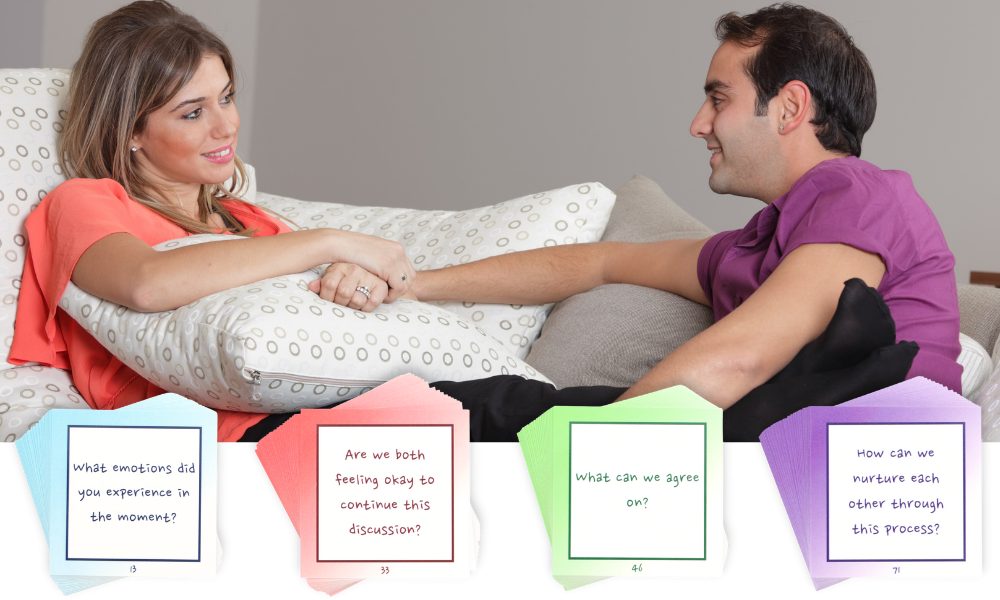
Benefits of Having Smooth Conversations to Guide You
There are so many benefits of using Smooth Conversations. From less conflict, and calm conversations, to closer, more loving relationships.
Discover the top benefits below and understand ‘why’ putting in the effort is worth it.
Explore more benefits in greater detail by downloading the free Smooth Conversation Guidebook.
- Peaceful discussions and kind, respectful communication.
- Clarity and shared understanding.
- Stronger connection, and a resilient bond.
- Knowing each other better.
- Speaking softly, listening openly and constructive outcomes.
- Greater fondness, love and affection.
- Forgiveness, empathy and feeling free & content.
- Feeling proud, confident and capable for the future.
- Feeling happy, loved, and cared for by your partner. ‘They get you’
- A growing sense of trust and respect for each other.
- Feeling content with your self, and being more consistent and reliable in the relationship.
- Feeling empowerment and energised by responsibility.
- Feeling courageous by being vulnerable and making a difference in your relationship.
- Feeling united, happy and affectionate in your relationship.
The benefits will be personal to you and your unique relationship.
What will it mean to you, when you are experiencing one or more of these benefits in your relationship?

